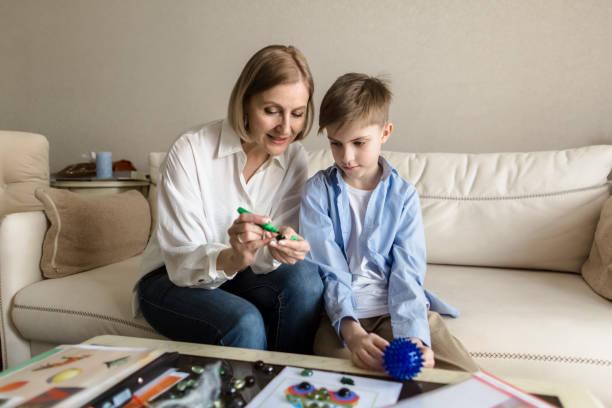How to Reinforce ABA Skills in Everyday Life

Applied Behavior Analysis (ABA) therapy has proven to be an effective approach for teaching new skills and promoting positive behaviors in individuals with autism and other developmental challenges. Conducting Home Based ABA Therapy offers a natural and comfortable setting where learned skills can be practiced and reinforced regularly. Reinforcement is the key to helping children generalize and maintain these ABA skills in their daily lives. This article explores practical, easy-to-implement strategies to reinforce ABA skills around the home and beyond, making therapy a seamless part of everyday interactions.
Why Reinforcement Matters in Home Based ABA Therapy
Reinforcement is a foundational principle of ABA therapy. It means encouraging positive behaviors by rewarding them, which increases the likelihood the behavior will occur again. In a home setting, reinforcement can be integrated naturally throughout daily routines. Using Home Based ABA Therapy strategies allows caregivers to provide consistent positive feedback tailored to a child’s interests, strengthening the acquisition of new skills and enhancing motivation. The goal is to make learning enjoyable and continuous, not limited solely to structured therapy sessions.
Positive Reinforcement Techniques for Everyday Life
One of the most powerful tools in ABA therapy is positive reinforcement. At home, this might look like giving praise, offering small treats, granting extra playtime, or using a token system to reward specific behaviors. For example, when a child follows directions or completes a task like brushing their teeth, immediately providing a reward signals that the behavior is both noticed and appreciated. It’s important to use rewards that are meaningful to the child to keep motivation high.
Caregivers can also use varied reinforcement types to maintain interest. Praise, physical affection (like hugs), access to favorite activities, or stickers can all serve as positive reinforcers. Timing matters too; delivering reinforcement immediately after the desired behavior helps the child clearly connect the behavior with its positive outcome.
Creating a Structured and Supportive Environment
Home Based ABA Therapy is most effective when the environment is structured to support learning. Consistency in routines and expectations provides a sense of security that helps the child anticipate what comes next, reducing anxiety and resistance. Visual aids such as schedules, charts, or flashcards can clarify daily tasks and make transitions smoother. A visual schedule could show times for meals, play, homework, and bedtime, helping the child independently follow routines.
Breaking down complex tasks into smaller, manageable steps—known as task analysis—also encourages success. Rather than asking a child to clean an entire room, caregivers might guide them through picking up toys, then putting books on the shelf, step by step. This scaffolding removes overwhelm while reinforcing desired behaviors incrementally.
Modeling and Prompting to Reinforce Skills
Modeling behaviors and providing prompts are effective ways to teach and reinforce ABA skills during everyday activities. When a caregiver models behaviors such as sharing, saying please and thank you, or taking turns, the child learns through observation. Prompting involves giving gentle verbal or physical cues to guide the child toward a desired behavior. For instance, reminding a child how to ask for help politely or showing them how to wash their hands correctly are simple, direct strategies.
As skills become more mastered, prompts can be gradually faded to encourage independence. This method supports skill retention and generalization, making the behaviors a natural part of the child’s routine.
Incorporating Natural Environment Teaching (NET)
Natural Environment Teaching (NET) is a method within ABA that emphasizes learning within the context of daily life and the child’s natural surroundings. This approach aligns perfectly with Home Based ABA Therapy by using real-world opportunities to reinforce skills. For example, counting utensils during meal prep can teach math skills, or asking a child to hand over shoes before leaving the house supports following instructions.
NET leverages the child’s interests to make learning spontaneous and engaging. Embedding reinforcement into playful, routine, or social activities encourages skill use in meaningful contexts, promoting generalization and retention.
Practical Tips for Everyday Reinforcement
-
Be Consistent: Reinforce behaviors consistently across family members and settings to avoid confusion.
-
Personalize Rewards: Choose reinforcers that match the child’s preferences and change them periodically to keep motivation high.
-
Use Natural Rewards: Incorporate activities the child enjoys as reinforcers, such as playtime, stickers, or screen time.
-
Set Clear Expectations: Use visual schedules and clear instructions to support understanding.
-
Provide Immediate Feedback: Quickly acknowledge desired behaviors for clarity.
-
Break Tasks Into Steps: Use task analysis to teach skills progressively.
-
Encourage Social Skills: Reinforce eye contact, sharing, and polite language during interactions.
-
Collaborate with Therapists: Align home reinforcement with the child's therapy goals for consistency.
By integrating these strategies, Home Based ABA Therapy can become a fluid, rewarding experience that empowers children to apply their skills confidently in daily life.
Conclusion
Reinforcing ABA skills in everyday life is essential for making lasting progress in Home Based ABA Therapy. Positive reinforcement, structured environments, modeling, prompting, and natural environment teaching all play crucial roles in supporting skill development and generalization. Caregivers who actively engage in these reinforcement techniques create an encouraging atmosphere that helps children thrive beyond therapy sessions. Implementing these simple yet effective strategies fosters not only behavioral improvements but also strengthens the parent-child bond through shared successes and meaningful interactions.
Through consistent effort and collaboration with ABA professionals, Home Based ABA Therapy can truly transform everyday moments into valuable learning opportunities that support a child's growth and development.
- Art
- Causes
- Crafts
- Dance
- Drinks
- Film
- Fitness
- Food
- Games
- Gardening
- Health
- Home
- Literature
- Music
- Networking
- Other
- Party
- Religion
- Shopping
- Sports
- Theater
- Wellness


